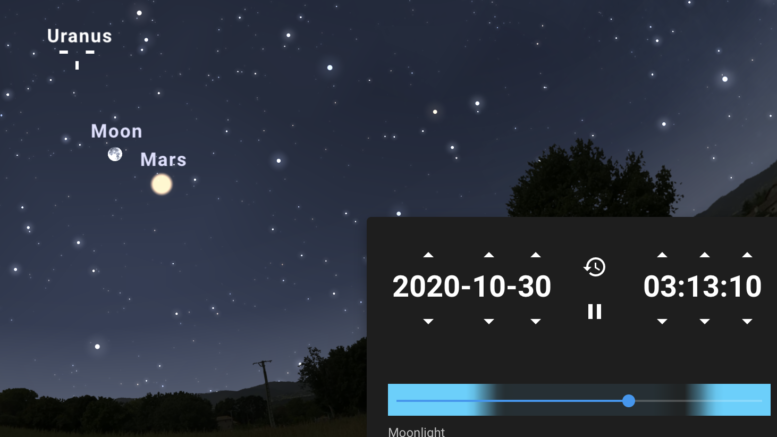In positional astronomy, two astronomical objects are said to be in opposition when they are on opposite sides of the celestial sphere, as observed from a given body (usually Earth).
A planet, asteroid, or comet is said to be “in opposition” or “at opposition” when the object is in opposition to the Sun. Because most orbits in the Solar System are nearly coplanar to the ecliptic, this occurs when the Sun, Earth, and the body are configured in an approximately straight line. This means that the Earth and the body are in the same direction as seen from the Sun. Opposition occurs only for superior planets, which is Mars, Jupiter, Saturn, Neptune, and Uranus.
The instant of opposition is defined as that when the apparent geocentric celestial longitude of the body differs by 180° from the apparent geocentric longitude of the Sun.
Seen from a superior planet, an inferior planet on the opposite side of the Sun is in superior conjunction with the Sun. An inferior conjunction occurs when the two planets align on the same side of the Sun. At inferior conjunction, the superior planet is “in opposition” to the Sun as seen from the inferior planet.
All superior planets are most easily visible at their oppositions because they are near their closest approach to Earth and are also above the horizon all night. The variation in magnitude caused by changes in elongation are greater the closer the planet’s orbit is to the Earth’s. Mars’ magnitude in particular changes with elongation. The maximum and minimum brightness of Jupiter differ by only a factor of 3.3 times, whilst those of Uranus – which is the most distant Solar System body visible to the naked eye – differ by a factor of 1.7 times.

Leave a comment